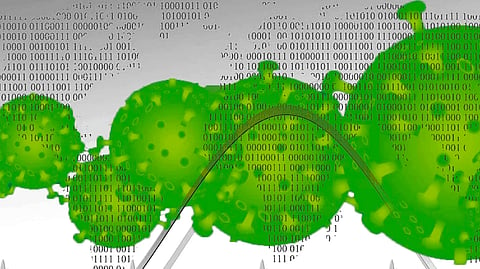

COVID-19's quick spread and impact have made people around the world feel helpless, scared, and frustrated. But the now and then news and discoveries about the cure and use of modern technology backed by data makes them feel safe and hope in the tragic 'pandemic' time.
Medical professionals, researchers, monitoring squad, are now heavily relying on data to have accessibility to updated, real-time data for improved, actionable insights. Hence Big Data is an asset that is helping forecast and understands the reach and impact of coronavirus. It is being employed by healthcare workers, scientists, epidemiologists, and policymakers to aggregate and synthesize incident data on a regular and global scale. This is coming at a perfect time as Big Data tools were not available during previous epidemics or pandemics.
While phrases of social distancing, lockdowns and flattening the curve are becoming common adages in a common man's life, Big Data is proving resourceful in studying the metrics about population movements across regions, check public compliance in following the lockdown and health protocols, magnitude and frequency of people with higher rates of temperature from the data by temperature scanners, all of which help in predicting how the curve with grow or decline in the next weeks.
Taiwan is one of the countries that successfully utilized Big Data to contain the spread of the coronavirus. Because of its proximity to China (focal nation of COVID-19 origin), Taiwan soon tapped in modern technologies to fight the pandemic. Tracking mobiles and big data analytics saved many precious lives due to timely action. Researchers at the US-based Rensselaer Polytechnic Institute (RPI), employing big data analytics to gain better insights on coronavirus from several different angles, one of which is biomedical research.
Most of these data are pulled from trusted bodies such as the U.S Centers for Disease Control and Prevention (CDC) and the World Health Organization (WHO) from information on the number of confirmed cases, fatalities, and recoveries. Even prominent tech companies like Amazon Web Services, Google Cloud, and others have offered researchers free access to open datasets and analytics tools to help them develop COVID-19 solutions faster. Verizon has launched a big data coronavirus search engine. It is an open-source program used to create coronavirus academic research searches over 50,000 articles and offers highly relevant information on COVID-19 research.
The ability of BigData to collect, store volumes of data, velocity to allow real-time data flow for faster processing, support a variety of data formats: structured-unstructured, numeric-symbolic, from numerous sources and variability in handling them as per demand loads with higher veracity makes it a great advantage when used along with Artificial Intelligence, Machine learning, IoT applications and so on.
This allows for possible early detection of future diseases with the identification of potential patients, carry out efficient and active clinical trials due to faster and near real-time evaluation of decision-making based on the data. It further assists authorities in planning immediate government schemes and plans to counter the COVID-19 pandemic. E.g., South Korea is leveraging Big Data for calculating the number of test kits that already are in stock or manufactured and the amount that needs to be produced to meet the demands. By early April, it was producing 100,000 test kits per day, and it has conducted more than 300,000 tests-which is more than 40 times the per capita rate of testing in the United States. Google and Apple have also partnered to develop a contact tracing app powered by Bluetooth technology.
Using data from the New York State Department of Health and Mental Hygiene, Rensselaer Polytechnic Institute researcher Malik Magdon-Ismail has developed models that can predict the social aspects of the pandemic. This includes the rate of infections over time, the infectious force of the pandemic, the rate at which mild infections become severe, and estimates for asymptomatic infections.
The more we know and discover about this virus, the more are chances to defeat it. This means more data and a necessity to protect it too. Experts say that this abundance of data (especially location data) makes it vulnerable to cyber-attacks. Since we cannot deny the importance of Big Data, we also need to work out on ways to protect it too. Then after this security assurance pairing up with IoT, AI, and other data-driven technologies in the current crisis can improve our understanding of the disease, expand access to health care, and help us stay connected.
Join our WhatsApp Channel to get the latest news, exclusives and videos on WhatsApp
_____________
Disclaimer: Analytics Insight does not provide financial advice or guidance. Also note that the cryptocurrencies mentioned/listed on the website could potentially be scams, i.e. designed to induce you to invest financial resources that may be lost forever and not be recoverable once investments are made. You are responsible for conducting your own research (DYOR) before making any investments. Read more here.
